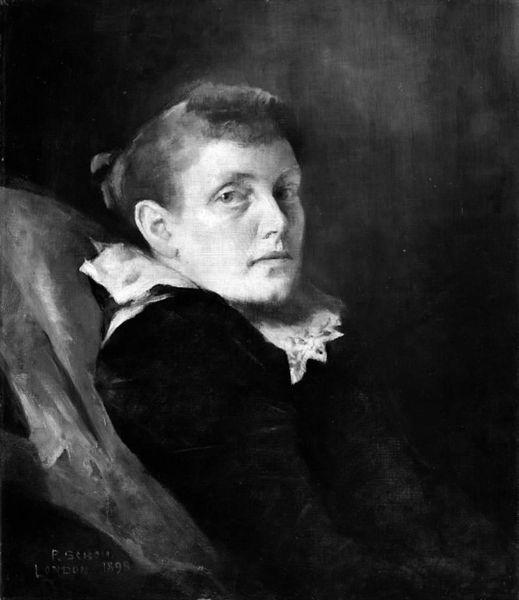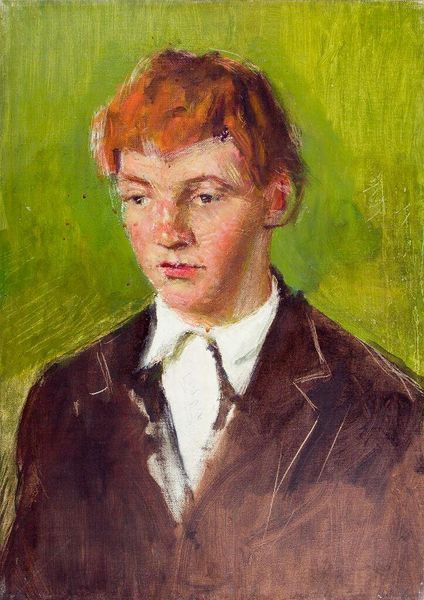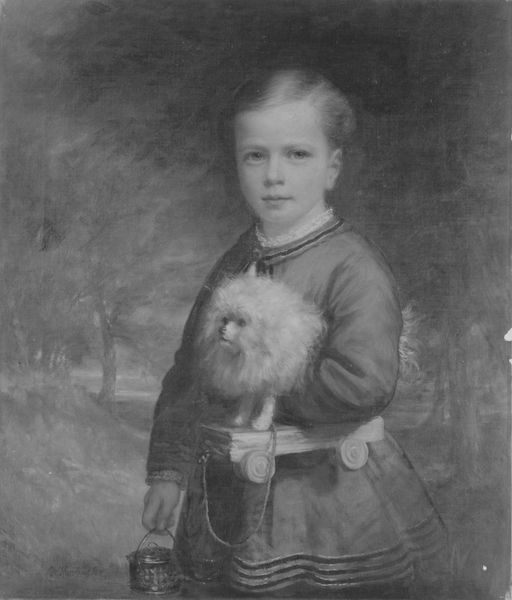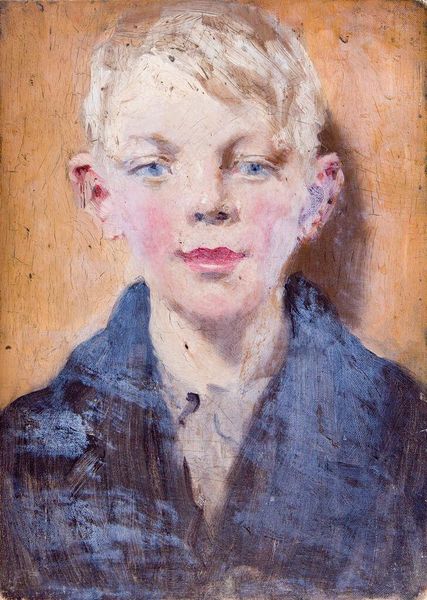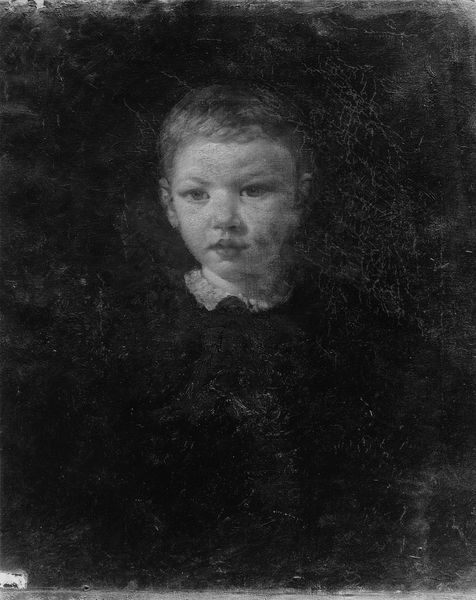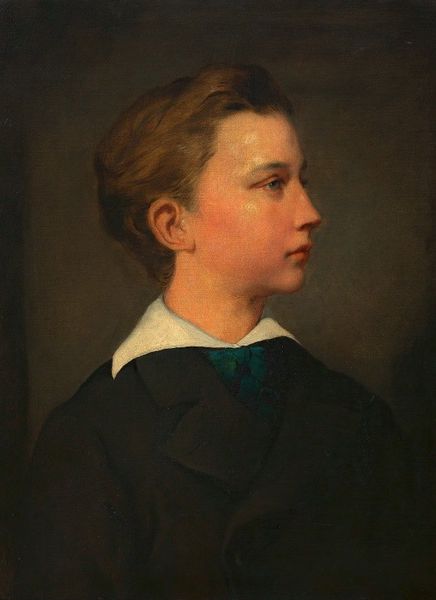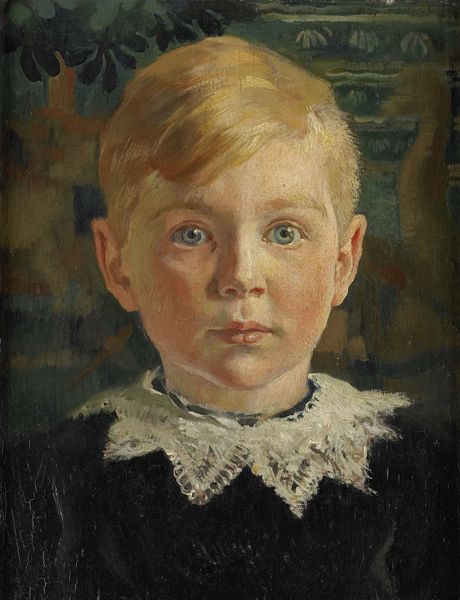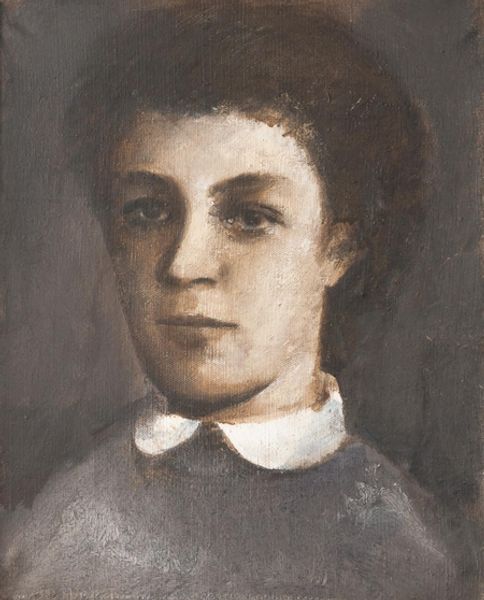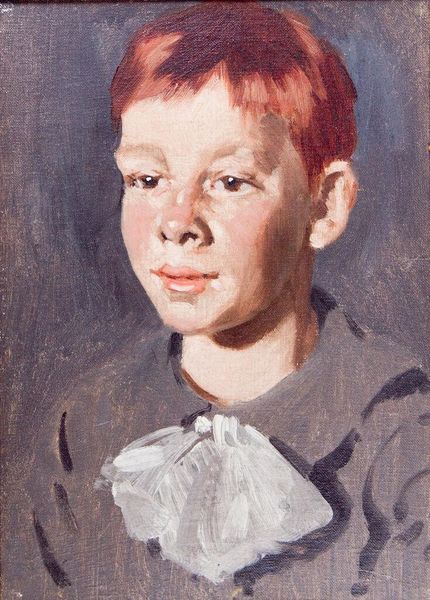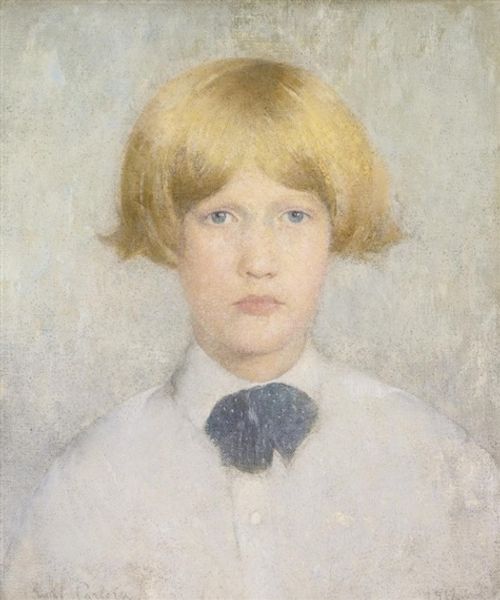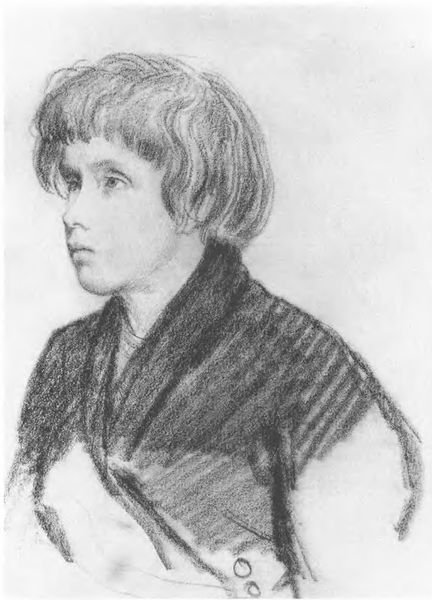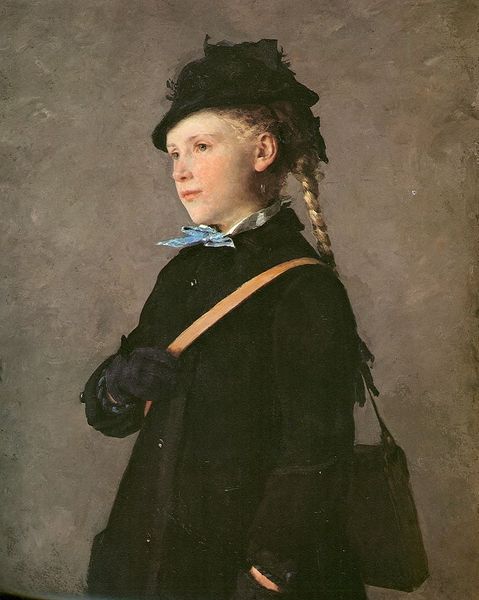
Dimensions: 62.5 cm (height) x 43 cm (width) (Netto)
Curator: Standing before us, we have "Fru Dax Finsen, f. Fiedler," a compelling oil painting crafted between 1890 and 1891. It currently resides here at the SMK, the National Gallery of Denmark. Editor: It's stark, almost severe, isn't it? That monochrome palette really underscores the sitter's profile, and what I suspect is a fur stole dominating the composition. Curator: Indeed. What intrigues me is how a portrait like this reflects the social and institutional forces at play in late 19th-century Danish society. This isn't just an image; it’s a statement about status and identity. Who was Fru Dax Finsen and what did portraiture signify for someone of her standing? Editor: From a material perspective, think about the oil paint itself – pigments derived from the earth, meticulously layered onto the canvas. We’re looking at labor, class, and even trade routes embedded in the very surface. And consider that stole - who trapped, skinned, tanned, and stitched it? The opulence on display here speaks volumes. Curator: Precisely. The commissioning of a portrait itself signifies a certain degree of wealth and social aspiration. Public displays like this helped to consolidate status. It tells the viewers of its time “We are part of the establishment". Editor: There's a certain pragmatism, even a rawness to the strokes, too. This artist hasn't smoothed away every detail to present an idealized view. What story might that tell about the artistic standards or the production expectations of portraiture at that point? Curator: Or consider how this artwork enters the museum. Museums often shape our perception of these historical works. Are we celebrating or critically examining that history by showcasing such works? Editor: Perhaps it’s both? Ultimately the materials provide tactile grounding while allowing insight into the hands that made it—human labor refined, bought, and presented for our consumption even today. Curator: An important dialogue! Thanks to both a nuanced reading of history and material analysis, we gained a greater appreciation for what this piece stands for. Editor: Indeed! And I’m left pondering not just *what* she is wearing but where *it* came from.
Comments
No comments
Be the first to comment and join the conversation on the ultimate creative platform.
